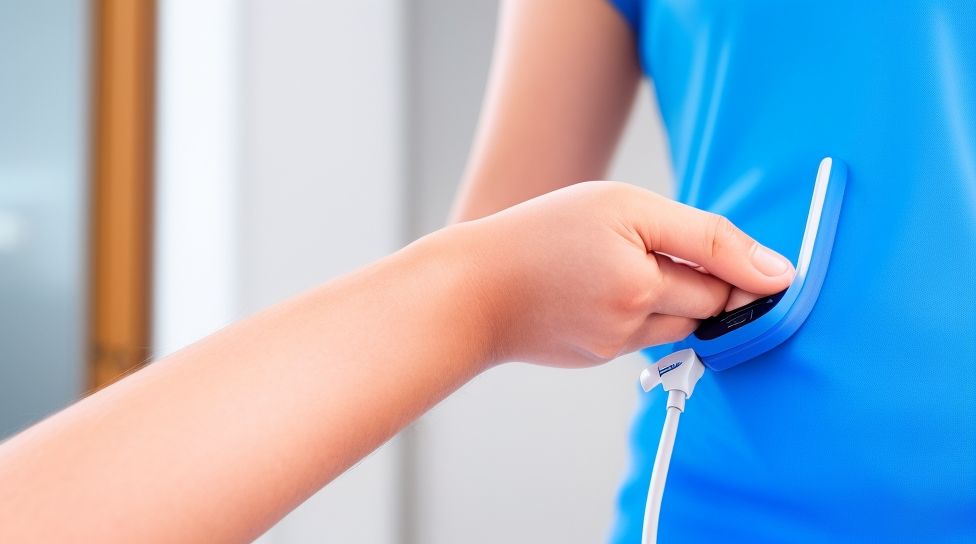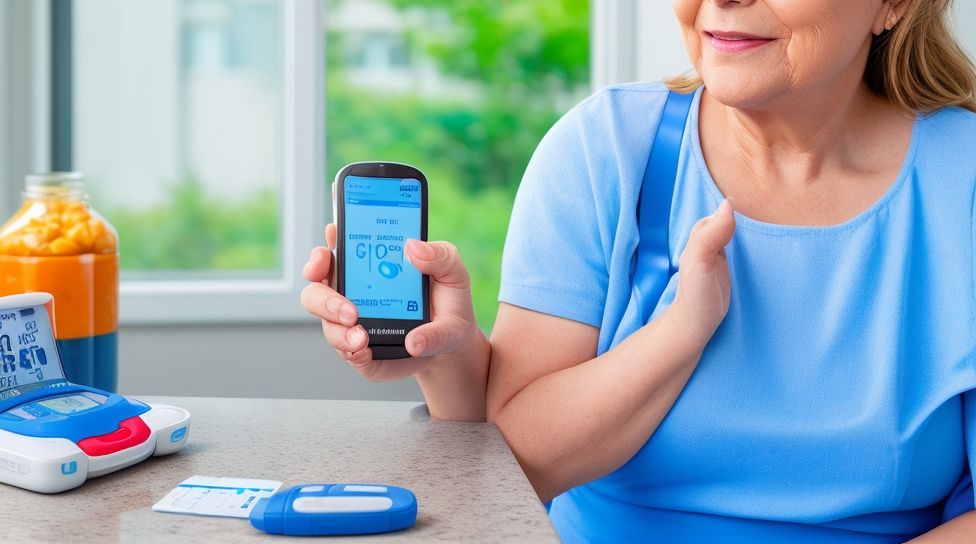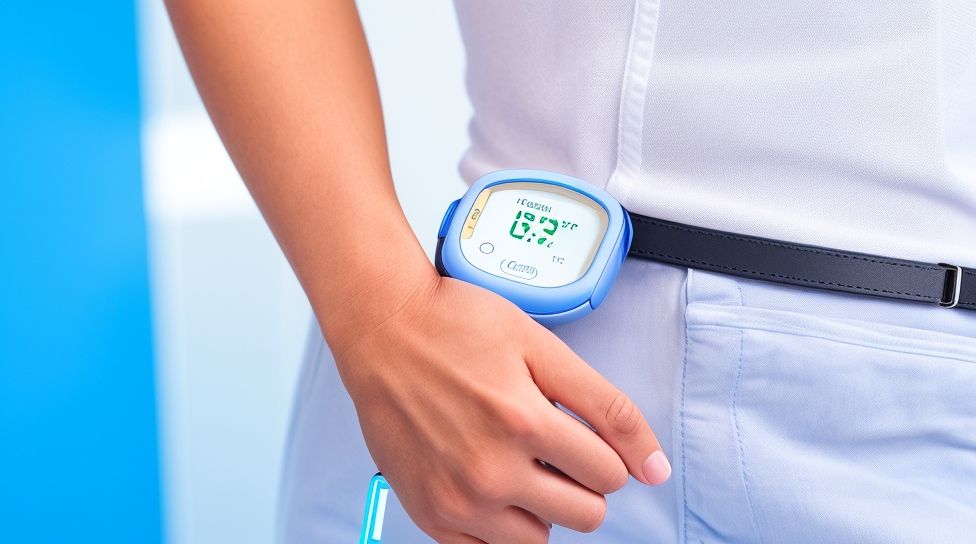Revolutionizing Diabetes Care with Continuous Glucose Monitoring
Continuous Glucose Monitoring (CGM) has emerged as a revolutionary technology in the field of diabetes care. Unlike traditional blood glucose monitoring methods, CGM provides real-time blood sugar readings, offering numerous benefits for individuals with diabetes. This article will delve into how CGM works and its advantages over traditional methods, as well as the individuals who can benefit from CGM and how to use the devices effectively. We will explore the differences between CGM and traditional blood glucose monitoring, highlighting the unique features that CGM brings. Lastly, we will touch upon future developments in CGM technology, showcasing the exciting advancements on the horizon for diabetes management. By the end of this article, you will have a comprehensive understanding of how CGM is revolutionizing diabetes care and improving the quality of life for those with diabetes.
Key takeaway:
- Continuous Glucose Monitoring (CGM) revolutionizes diabetes care: CGM technology provides real-time glucose readings, enhancing diabetes management and improving quality of life for patients.
- CGM offers benefits to various diabetes patient groups: Type 1 and Type 2 diabetes patients, as well as those with gestational diabetes, can benefit from CGM for improved monitoring and insulin dosage tuning.
- CGM technology is advancing for future developments: Technological advances, potential improvements in safety and effectiveness, and integration with insulin infusion pumps are being explored to enhance the CGM experience.
How Does Continuous Glucose Monitoring Work?

Photo Credits: Diabetescompass.Com by Wayne Robinson
Continuous Glucose Monitoring (CGM) works by providing real-time information about a person’s glucose levels throughout the day and night. Here’s how it works:
- Sensor Placement: A small, disposable sensor is inserted under the skin, usually on the abdomen or arm. This sensor measures glucose levels in the interstitial fluid, which closely reflects blood glucose levels.
- Glucose Measurement: The sensor continuously measures glucose levels at regular intervals, usually every few minutes. It uses a tiny filament or electrode to detect glucose levels in the interstitial fluid.
- Data Transmission: The sensor wirelessly transmits the glucose readings to a receiver or a compatible device, such as a smartphone or a dedicated CGM device.
- Glucose Data Display: The receiver or device displays the real-time glucose readings, usually in the form of a graph or numerical values. This allows users to monitor their glucose levels throughout the day.
- Trend Analysis: CGM systems often provide trend arrows or indicators that show the direction and rate at which glucose levels are changing. This helps users understand whether their glucose levels are rising, falling, or stable.
- Alerts and Alarms: CGM devices can be programmed to provide customizable alerts and alarms based on specific glucose thresholds. This helps users stay informed of high or low glucose levels, even when they are not actively checking the device.
- Data Storage and Analysis: CGM systems typically store glucose data over time, allowing users and healthcare professionals to review and analyze trends, patterns, and fluctuations in glucose levels. This data can be used to make informed decisions regarding diabetes management.
- Insulin Adjustment: Based on the continuous glucose readings, individuals can make informed decisions about their insulin doses, timing of meals, physical activity, and other diabetes management strategies.
Continuous Glucose Monitoring revolutionizes diabetes care by providing real-time and continuous information about glucose levels, enabling better diabetes management, reducing the risk of hypoglycemia and hyperglycemia, and improving overall quality of life for individuals with diabetes.
Benefits of Continuous Glucose Monitoring

Photo Credits: Diabetescompass.Com by Walter Hernandez
The benefits of continuous glucose monitoring (CGM) have revolutionized diabetes care, providing valuable insights and improving the management of the condition. Here are some key advantages:
- Real-Time Data: CGM provides real-time and continuous data on glucose levels, allowing individuals with diabetes to closely monitor their blood sugar throughout the day. This helps in making immediate and informed decisions regarding insulin dosage, diet, and physical activity.
- Trend Analysis: CGM devices display glucose trends over time, enabling users to identify patterns and make adjustments to their diabetes management plan. It helps in understanding how specific foods, activities, or medications affect blood sugar levels.
- Early Detection of Highs and Lows: CGM systems provide alerts and warnings when blood sugar levels go too high (hyperglycemia) or too low (hypoglycemia). This allows for prompt action, preventing severe complications and improving overall glycemic control.
- Reduced Fingerstick Testing: CGM significantly reduces the need for frequent fingerstick tests. Instead of relying solely on traditional glucose meters, CGM devices continuously monitor glucose levels, reducing the need for painful and inconvenient finger pricks.
- Improved Sleep: CGM systems can provide important data during sleep, detecting nocturnal hypoglycemia or hyperglycemia. This enables individuals with diabetes and their healthcare providers to make necessary adjustments to avoid nighttime blood sugar fluctuations and promote better sleep quality.
- Remote Monitoring: Some CGM systems offer the option for remote monitoring by healthcare professionals or loved ones. This allows for timely intervention and support, especially in cases where the individual with diabetes may not be able to recognize or address critical glucose fluctuations.
- Enhanced Quality of Life: By providing a more comprehensive and dynamic understanding of blood sugar levels, CGM empowers individuals with diabetes to make proactive decisions about their health. This can lead to improved glycemic control, minimizing the risk of long-term complications and enhancing overall quality of life.
Continuous glucose monitoring has truly transformed diabetes care, offering numerous benefits that contribute to better glucose management, reduced complications, and improved well-being for individuals living with diabetes.
Who Can Benefit from Continuous Glucose Monitoring ?

Photo Credits: Diabetescompass.Com by Raymond Jackson
Continuous Glucose Monitoring (CGM) can benefit various individuals who have diabetes or are at risk of developing diabetes. The following groups of people can particularly benefit from CGM:
- People with Type 1 Diabetes: CGM is highly beneficial for individuals with Type 1 Diabetes as it provides real-time information about their glucose levels throughout the day and night. It helps in managing blood sugar levels more effectively, making it easier to adjust insulin doses and prevent hypoglycemia or hyperglycemia.
- People with Type 2 Diabetes: CGM can also be beneficial for individuals with Type 2 Diabetes, especially those who require insulin therapy. It provides valuable insights into their glucose patterns, allowing them to make informed decisions about diet, exercise, and medication adjustments.
- Gestational Diabetes: Pregnant individuals with gestational diabetes can benefit from CGM to monitor their glucose levels and ensure optimal blood sugar control during pregnancy. It helps in managing their condition and reducing the risk of complications for both the mother and the baby.
- Children and Adolescents: CGM is particularly helpful for children and adolescents with diabetes as it provides caregivers and healthcare professionals with real-time data on their glucose levels. It allows for better management of blood sugar levels, reducing the risk of hypoglycemia or hyperglycemia.
- Adults with Uncontrolled Diabetes: Adults with diabetes who struggle to achieve optimal blood sugar control can benefit from CGM. It provides continuous feedback on glucose levels, enabling them to identify patterns, make necessary lifestyle changes, and work closely with their healthcare team to adjust their treatment plan.
- Individuals with Hypoglycemia Unawareness: Some individuals with diabetes may have a reduced ability to detect when their blood sugar levels drop dangerously low, known as hypoglycemia unawareness. CGM can alert them to such episodes and help prevent severe hypoglycemic events.
- Those Seeking to Improve Diabetes Management: Even individuals without diabetes complications can benefit from CGM if they are seeking to enhance their diabetes management. It provides a comprehensive view of their glucose levels and helps in making informed decisions about diet, exercise, and medication adjustments.
Continuous Glucose Monitoring has revolutionized diabetes care by providing individuals and healthcare professionals with valuable real-time data, leading to better management of diabetes and improved overall health outcomes.
How to Use Continuous Glucose Monitoring Devices

Photo Credits: Diabetescompass.Com by Gary Thompson
Using continuous glucose monitoring (CGM) devices is a straightforward process. Follow these steps to effectively use CGM devices:
- Select the CGM Device: Choose a CGM device that suits your needs and is compatible with your diabetes management plan. Consult with your healthcare provider or diabetes educator to determine the best option for you.
- Prepare the Sensor: Before inserting the sensor, clean the application site with an alcohol wipe and let it dry. Apply an adhesive patch if required by the device’s instructions.
- Insert the Sensor: Follow the device-specific instructions to insert the sensor under your skin. This is typically done with a small needle or applicator provided with the device. Ensure proper placement as guided by the instructions.
- Connect the Transmitter: Attach the transmitter to the sensor. This component wirelessly communicates with the receiver or mobile app to provide real-time glucose readings.
- Calibrate the Device: Some CGM devices require calibration with fingerstick blood glucose readings to ensure accuracy. Follow the device instructions for calibration intervals and procedures.
- Set Thresholds and Alerts: Configure your CGM device to set personalized glucose thresholds and alerts. This allows you to receive notifications when your glucose levels go too high or too low.
- Monitor Glucose Readings: Check the glucose readings on the receiver or mobile app. Depending on the device, you may be able to view trends, graphs, and historical data to better understand your glucose patterns.
- React to Readings: Take appropriate action based on your glucose readings and any alerts received. If your glucose levels are out of range, follow your diabetes management plan, which may include adjusting insulin doses, consuming carbohydrates, or contacting your healthcare provider.
- Perform Routine Maintenance: Follow the device-specific instructions for sensor replacement, transmitter charging, and general device maintenance. Regularly change the sensor and transmitter as recommended to ensure accurate and reliable results.
- Work with Your Healthcare Team: Share your CGM data with your healthcare team during regular check-ups. They can assess the data, make adjustments to your diabetes management plan, and provide guidance for optimal glucose control.
By following these steps and integrating CGM devices into your diabetes care routine, you can benefit from real-time glucose monitoring and make more informed decisions to manage your diabetes effectively.
Continuous Glucose Monitoring vs. Traditional Blood Glucose Monitoring

Photo Credits: Diabetescompass.Com by Alan Gonzalez
Comparison between Continuous Glucose Monitoring (CGM) and Traditional Blood Glucose Monitoring:
|
Aspect |
Continuous Glucose Monitoring (CGM) |
Traditional Blood Glucose Monitoring |
|
Method |
CGM involves continuous monitoring of glucose levels throughout the day using a small sensor inserted under the skin that measures glucose in interstitial fluid. |
Traditional monitoring involves pricking the finger to draw blood and using a blood glucose meter to obtain a single glucose reading at a specific moment in time. |
|
Frequency of Readings |
CGM provides continuous real-time glucose readings throughout the day, typically every few minutes, providing a wealth of data on glucose patterns and trends. |
Traditional monitoring provides individual glucose readings at specific times when the user performs a fingerstick test, usually several times a day. |
|
Accuracy |
CGM systems have improved in accuracy over the years and provide reliable glucose readings, although there can be slight discrepancies compared to blood glucose meter readings. |
Traditional blood glucose meters are generally accurate but may have slight variability between devices and require proper calibration and handling. |
|
Trend Analysis |
CGM allows for in-depth trend analysis by providing glucose data over time. Users can identify patterns, track how glucose levels change after meals or exercise, and make informed decisions about their diabetes management. |
Traditional monitoring provides a snapshot of glucose levels at a specific moment, limiting the ability to analyze trends and patterns. |
|
Alerts and Alarms |
CGM systems can be set to provide alerts and alarms when glucose levels are too high or too low, helping users proactively manage their diabetes and avoid dangerous situations. |
Traditional monitoring does not offer alerts or alarms for glucose levels, relying on the user to perform regular fingerstick tests and interpret the results. |
Future Developments in Continuous Glucose Monitoring Technology

Photo Credits: Diabetescompass.Com by Michael Ramirez
The future of continuous glucose monitoring (CGM) technology holds several exciting developments that can further revolutionize diabetes care. Here are some potential advancements to look forward to:
- Improved Accuracy: CGM technology is expected to continue improving its accuracy in measuring glucose levels. This includes minimizing calibration requirements and reducing sensor errors to provide more reliable and precise data.
- Extended Sensor Wear: The development of longer-lasting sensors is anticipated, allowing individuals with diabetes to wear them for extended periods without frequent replacements. This can enhance convenience and reduce overall costs.
- Smaller Form Factors: CGM devices are likely to become smaller and more discreet, making them less obtrusive for users. This can improve comfort and encourage wider adoption of the technology.
- Integration with Insulin Pumps: Integration between CGM devices and insulin pumps can enable closed-loop systems, also known as artificial pancreas systems. These systems automatically adjust insulin delivery based on real-time glucose data, offering better glycemic control.
- Enhanced Data Analysis: Future CGM systems may incorporate advanced data analytics and machine learning algorithms. This can provide users with more meaningful insights, personalized recommendations, and early detection of glucose patterns that may indicate potential complications or hypoglycemic events.
- Wireless Connectivity: CGM devices are expected to become more connected, allowing seamless data transmission to smartphones, smartwatches, or cloud platforms. This enables real-time monitoring by healthcare providers and enhances remote patient management.
- Continuous Glucose Control: Research is underway to develop closed-loop systems that not only monitor glucose levels but also automatically deliver insulin or other glucose-regulating medications as needed. This holds great promise for reducing the burden of diabetes management on individuals.
- Interoperability: Future CGM technology may focus on interoperability, allowing data exchange between different devices and platforms. This can facilitate better coordination of care among healthcare professionals and improve overall diabetes management.
- Non-Invasive Monitoring: Efforts are ongoing to develop non-invasive or minimally invasive CGM technologies that eliminate the need for frequent fingerstick blood glucose measurements. This can greatly enhance user experience and compliance.
- Data Integration: Integration of CGM data with other health-related data, such as physical activity, nutrition, and sleep patterns, can provide a more comprehensive understanding of the impact of various factors on glucose control. This holistic approach can support more personalized and effective diabetes management strategies.
These future developments in continuous glucose monitoring technology hold immense potential to transform diabetes care, improve quality of life for individuals with diabetes, and enable more proactive and precise management of the condition.
Some Facts About Continuous Glucose Monitoring: Revolutionizing Diabetes Care:
- ✅ Continuous Glucose Monitoring (CGM) technology has the potential to revolutionize diabetes care. (Source: diabetesjournals.org)
- ✅ CGM devices have the potential to make near-normal blood glucose concentrations achievable. (Source: diabetesjournals.org)
- ✅ CGM provides real-time information on current blood glucose levels, feedback on intervention effectiveness, and warnings for dangerous levels. (Source: diabetesjournals.org)
- ✅ The FreeStyle Libre system is a continuous glucose monitoring system that measures glucose levels through a small sensor applied to the back of the upper arm. (Source: abbott.com)
- ✅ Studies have shown that FreeStyle Libre users who scan more frequently spend less time in hypoglycemia and experience improved average glucose levels. (Source: abbott.com)
Frequently Asked Questions
What is continuous glucose monitoring (CGM) and how does it revolutionize diabetes care?
Continuous glucose monitoring (CGM) technology provides real-time feedback on blood glucose levels and the effectiveness of interventions, revolutionizing diabetes care. It helps achieve near-normal blood glucose concentrations and facilitates decision-making regarding activities like driving.
What are the challenges associated with CGM technology?
Challenges associated with CGM technology include high costs, limited approved uses, and insurance coverage. These factors currently limit the widespread adoption of CGM devices.
How does the FreeStyle Libre system work?
The FreeStyle Libre system is a continuous glucose monitoring system that utilizes a small sensor applied to the back of the upper arm. It provides real-time glucose readings for up to 10 days, allowing users to discreetly and conveniently measure their glucose levels through clothes.
What are the benefits of using the FreeStyle Libre system?
The FreeStyle Libre system provides real-time glucose results, historical trends, and directional trend arrows. It can reveal hypoglycemic or hyperglycemic trends, aiding in the selection of appropriate diabetes management strategies. Studies have shown that more frequent scanning with the FreeStyle Libre system can improve average glucose levels and reduce time spent in hypoglycemia.
What is the significance of CGM for patients with type 1 diabetes?
CGM is crucial for patients with type 1 diabetes as it helps make informed decisions about activities such as driving. It provides real-time information on blood glucose levels, intervention effectiveness, and warnings for dangerous levels.
How does CGM technology impact diabetes treatment and management?
CGM technology enables accurate determination of blood glucose concentrations, essential for intensified diabetes management. By providing actionable trends and patterns, CGM helps improve treatment decisions, glycemic control, and overall diabetes management.






